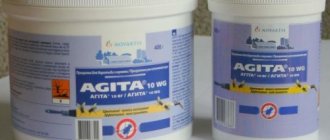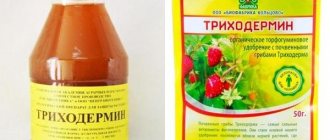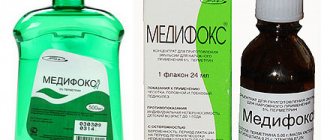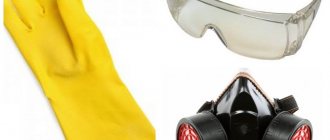Release form and composition
The drug is available in the form of a suspension for intramuscular (IM) administration: a liquid with a homogeneous structure, white, without foreign inclusions [0.5 ml (dose for persons 16 years of age and older) or 0.25 ml (dose for children from 1 year to 16 years) in ampoules, in a cardboard box of 10 ampoules complete with or without an ampoule knife and instructions for use of Klesh-E-Vaka].
One vaccination dose contains:
- active component: inactivated antigen of the TBE virus (tick-borne encephalitis) - titer not less than 1:128;
- excipients: human albumin (10 or 20% solution for infusion - albumin, sodium caprylate, sodium chloride), aluminum hydroxide, sucrose, buffer system salts - trometamol and sodium chloride.
The suspension does not contain antibiotics, formaldehyde or preservatives.
Pharmacological properties
Pharmacodynamics
Tick-E-Vac is a concentrated vaccine for the prevention of tick-borne encephalitis. It is a purified suspension of formalin-inactivated TBE virus strain “Sofin”, which was obtained by reproduction in a primary culture of chicken embryo cells and sorbed on aluminum hydroxide. The immunobiological property of the vaccine is to stimulate the production of cellular and humoral immunity to the TBE virus. After a vaccination course consisting of two injections of Tick-E-Vac, the presence of virus-neutralizing antibodies is detected in 90% of vaccinated people.
Indications for use
The use of Tick-E-Vac is indicated for specific prevention of TBE in the population (children from 1 year to 16 years at a dose of 0.25 ml and persons aged 16 years and older at a dose of 0.5 ml) who permanently or temporarily live on enzootic in CE territories.
The temporary living contingent includes persons visiting these territories for the purpose of working in dacha and garden plots, recreation, tourism and performing certain types of activities (fishing, procurement, expedition, geological, survey, deratization and disinfestation work, irrigation, construction, excavation and movement soil, work in agriculture, logging, clearing and landscaping of forests, recreational and health areas).
Persons working with materials containing the TBE virus, as well as donors, are subject to immunization to obtain specific immunoglobulin.
Directions for use and doses
Routine vaccination.
The primary course of vaccination consists of two intramuscular injections of 1 dose each with an interval of 1-7 months. One vaccination dose is: for persons aged 16 years and older - 0.5 ml; for children from 1 year to 16 years - 0.25 ml.
Vaccinations can be carried out throughout the year, including during the epidemic season. Visiting the TBE site during the epidemic season is allowed no earlier than 2 weeks after the second vaccination.
The most optimal interval between the first and second vaccinations is 5-7 months (autumn - spring).
Emergency vaccination.
For epidemic indications, emergency vaccination may be carried out. In this case, the vaccine is administered twice with an interval of 2 weeks to persons aged 16 years and older at a dose of 0.5 ml; children from 1 to 16 years old at a dose of 0.25 ml.
Visiting the TBE outbreak during the epidemic season is allowed no earlier than 2 weeks after the second vaccination.
The first revaccination with both regimens is carried out once, 1 year after completion of the primary course of vaccination with a dose of 0.5 ml for persons aged 16 years and older and a dose of 0.25 ml for children from 1 year to 16 years.
Subsequent distant revaccinations are carried out every three years, once in an age-specific dosage.
Contraindications
Absolute:
- infectious and non-infectious diseases, the stage of exacerbation of chronic pathologies, including a period of at least 30 days after recovery (remission);
- history of severe allergic reactions;
- autoimmune diseases;
- bronchial asthma;
- the appearance of a complication or severe reaction (increase in body temperature above 40 °C, swelling and/or hyperemia in diameter more than 8 cm at the site of vaccine administration) during previous immunization;
- period less than two weeks after birth;
- age up to 1 year;
- established allergy to the components of Klesh-E-Vaka.
In addition, when vaccinating donors, it is necessary to take into account contraindications to blood donation.
A decision on vaccination during pregnancy should be made with great caution and only if there is significant evidence of the risk of possible infection with the TBE virus.
Why is tick-borne encephalitis dangerous?
The causative agent of encephalitis is found in ticks that live in the forests and taiga of many countries. According to statistics, most cases of encephalitis infection occur in Russia, namely in Western and Eastern Siberia, in the Urals, in the Central and North-Western regions. In the spring, ticks become active and attach themselves to people and animals to feed on blood.
The majority of people bitten are city residents who came to the endemic area. Collecting berries, mushrooms and cones from city dwellers who do not observe precautions in the forest sometimes ends in infection. Fever and nausea after a tick bite are signs of encephalitis. The consequence of further development of the disease is paralysis, loss of consciousness, coma, and possible death.
Mite-E-Vac, instructions for use: method and dosage
Tick-E-Vac cannot be used intravenously!
The vaccine is administered by intramuscular injection into the deltoid muscle of the shoulder.
Vaccinations are carried out strictly observing the rules of asepsis and antiseptics, in a specially equipped room equipped with anti-shock and anti-allergic therapy.
Before opening the ampoule, it is necessary to visually assess its contents for suitability. If a violation of integrity, labeling, the presence of foreign inclusions or an expired shelf life is detected, the drug should be discarded.
If, after shaking the ampoule, the suspension acquires a homogeneous structure, without any inclusions, then the ampoule can be opened and inoculated.
Due to the existing risk of developing immediate allergic reactions after vaccination, the patient should be under medical supervision for 0.5 hours.
To exclude the presence of contraindications, on the day of the Tick-E-Vaka vaccination, the doctor (paramedic) must conduct an examination, measure the patient’s body temperature and question him about possible health complaints.
Preventive vaccination schedule:
- routine vaccination: 1 vaccination dose for persons aged 16 years and older is 0.5 ml, 1 vaccination dose of Tick-E-Vaka for children from 1 year to 16 years – 0.25 ml. Primary vaccination consists of two doses, which are administered alternately with an interval of 1–7 months; the most optimal period between the first and second vaccination is 5–7 months (autumn – spring). Vaccinations can be carried out throughout the year, including the epidemic season. During the epidemic season, a TBE site can be visited no earlier than 1/2 month after the second dose of the vaccine;
- emergency vaccination (if there are epidemic indications): 0.5 ml for persons aged 16 years and older and 0.25 ml for children from 1 year to 16 years, twice with an interval of 1/2 month. A visit to the TBE site during the epidemic season is allowed only 1/2 month after the second vaccination.
12 months after completion of the primary course of planned or emergency preventive vaccination, the first revaccination must be carried out. It consists of a single injection of Mite-E-Vac in a dose of 0.5 ml for persons aged 16 years and older and in a dose of 0.25 ml for children from 1 year to 16 years.
Subsequent revaccinations are carried out regularly at intervals of 36 months by administering a single dose appropriate to the person’s age.
The vaccination course for donors consists of two doses of 0.5 ml, which are administered at intervals of 5–7 months, or three doses of 0.5 ml with an interval of 3–5 weeks between vaccinations. The first regimen is considered the most optimal, providing better immunization. Revaccination is carried out by administering a single dose of 0.5 ml after 6–12 months. The first blood draw from donors is indicated no earlier than 1/2–1 month after the course of vaccination.
Who should be vaccinated with the tick-e-vac vaccine?
People whose place of residence is in areas where there are frequent cases of tick-borne encephalitis should be vaccinated. Vaccination is carried out for children from 1 year. Health care workers, as well as people whose work involves frequent visits to contaminated areas (forests and fields), are required to be vaccinated.
It is worth noting that the drug Klesch E VAK is not on the list of mandatory vaccinations, but if there is an increased risk of encephalitis, it would be better if every person can protect themselves. Thanks to the production of a sufficient number of the necessary antibodies, the virus, after entering the human body, will not be able to cause complications, and the symptoms of the disease itself, if they appear, will not last long.
Side effects
After vaccination (within the first 48 hours), people of all age groups may experience local reactions. Often they are manifested by redness, pain at the injection site and/or swelling, very rarely - the formation of an infiltrate, a slight increase in regional lymph nodes. Local reactions will usually last no more than 72 hours.
In some cases, after administration of the Tick-E-Vac vaccine, general reactions may develop: during the first 48 hours - in persons 16 years of age and older, 72 hours - in children from 1 to 16 years of age. Children and adults are at risk of developing the following systemic adverse events:
- very often (> 1/10): increased body temperature up to 37.5 °C in children aged 1–16 years;
- often (≥ 1/100 to < 1/10): general malaise, nausea, headache, fever up to 37.5 °C in persons aged 16 years and older or up to 38.5 °C in children over 1 years up to 16 years;
- uncommon (≥ 1/1000 to < 1/100): increased body temperature from 37.5 to 38.5 ° C in persons aged 16 years and older;
- rare (≥ 1/10,000 to < 1/1000): increased body temperature above 38.5 °C.
The duration of general reactions is usually no more than 48 hours in adults and 72 hours in children aged 1 to 16 years. Typically, local and general reactions develop after the first dose of the Tick-E-Vac vaccine.
There are isolated cases of immediate allergic reactions.
Contraindications tick e vac
The manufacturers of the drug claim that the vaccine is well tolerated and has virtually no negative effects on the body.
It is worth highlighting the following contraindications for the use of the EVAC Tick vaccine:
- individual intolerance to one of the components of the drug;
- increased body temperature;
- complication of atopic eczema syndrome;
- the appearance of an allergy to any food product;
- bronchial asthma;
- autoimmune pathologies;
- age up to 12 months;
- chronic disease at the acute stage;
- rheumatism;
- tuberculosis;
- epilepsy;
- kidney and liver pathologies;
- previous heart attack or stroke;
- diabetes mellitus, with a blood sugar level of 10 units or more;
- pathology of the neuroendocrine and cardiovascular systems;
- existing oncological diseases.
It is worth noting that vaccination should occur at least 14 days after infection with the virus. The effect of the drug Mite EVAC on pregnant women, as well as on the intrauterine fetus, has not been studied. In this case, vaccination should occur under the strict supervision of doctors. Nursing mothers can be vaccinated against encephalitis only 2 weeks after birth.
special instructions
The completed Mite-E-Vaka vaccination must be registered in the established registration form, which indicates the name of the drug, batch number, manufacturer, date, dose and reaction to the vaccination.
Impact on the ability to drive vehicles and complex mechanisms
In cases where general reactions to the administration of Klesh-E-Vac are severe (headache, high body temperature), patients should temporarily stop driving vehicles and complex mechanisms.











